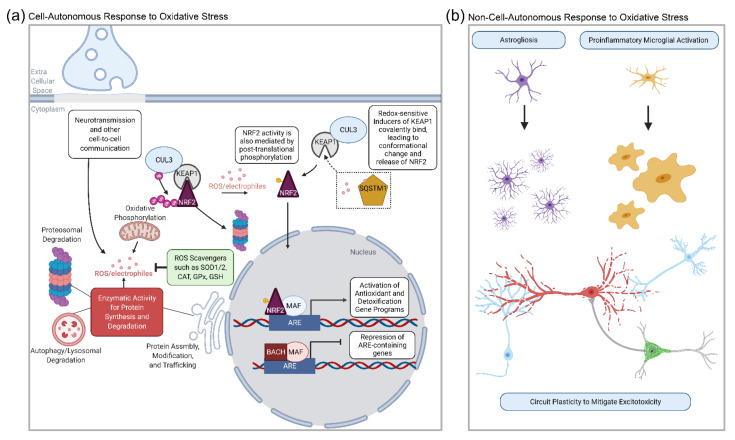Figure 1.
Schematic of canonical factors in cell-autonomous sources of oxidative stress and response are shown in (a). At basal state, transcription factor NRF2 is sequestered in the nucleus by the KEAP1 ubiquitination complex; here, CUL3 ligase activity leads to poly-ubiquitination of NRF2 for its targeted proteasomal degradation. Oxidative stress leads to a conformational change in KEAP1, and NRF2 is released to be phosphorylated and translocated into the nucleus to activate antioxidant response gene programs. Examples of non-cell-autonomous mediators of oxidative stress are shown in (b). Created with BioRender.com (accessed on 21 October 2021).

